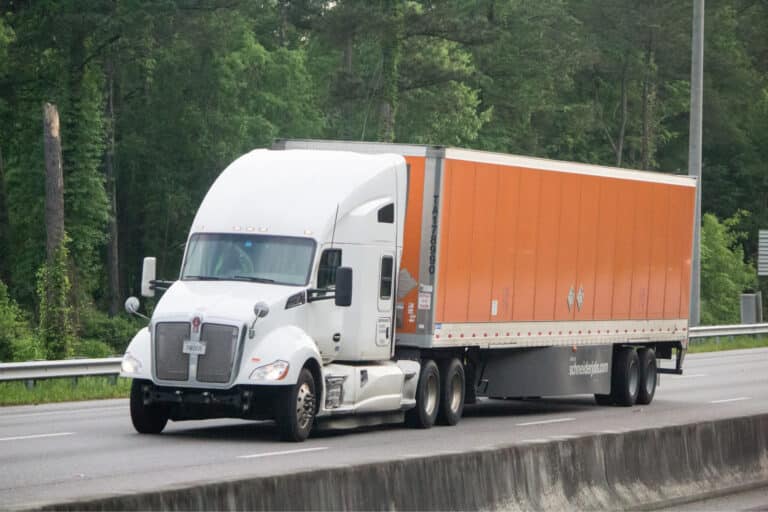If you’re in the trucking business, you’ve probably heard about vehicle fleet management programs. But what exactly are they, and why should you care? Let’s break it down.
Fleet management is a way to keep your trucks running smoothly, safely, and profitably. It’s like having a skilled co-pilot who helps you navigate the challenges of the road and the business.
These days, most fleet management programs use special computer systems. These systems are the eyes and ears of your fleet, helping you track everything from where your trucks are to how much fuel they’re using.
For truckers like you, these systems can make your job easier and safer. They can help you avoid traffic, stay on schedule, and even keep you on the right side of the law when it comes to driving hours. Plus, they can help your company save money, which could mean more in your pocket too.
Do you have any questions? Talk to ELD Advisor: 650-405-3372 or Request Callback
What Is a Vehicle Fleet Management Program?
Now, let’s dive a bit deeper into what a fleet management program really is. Think of it as a game plan for running your trucking operation. It covers everything from keeping your trucks in good shape to making sure you’re following all the rules of the road.
Here are the main things a good fleet management program does:
- Improves safety. It helps keep you and other drivers safe by tracking things like speed and breaking habits.
- Boosts efficiency. It finds better routes and ways to use less fuel, so you can get more done in less time.
- Cuts costs. By keeping trucks in good shape and using fuel wisely, it helps save money.
- Helps with rules. It makes sure you’re following all the trucking laws and regulations.
The main goals of these programs are to keep everyone safe, make the business run smoothly, follow the rules, and save money.
To make all this happen, most fleet management programs use special computer systems. These systems are like the brain of the operation, collecting and using information to help make smart decisions.
In the next section, we’ll take a closer look at how these systems work. But for now, just remember: a good fleet management program, backed by the right technology, can make your life on the road easier and help your company succeed.
Fleet Management Systems: The Technological Backbone

Now that we understand what a fleet management program is, let’s talk about the technology that makes it all work: fleet management systems.
Think of a fleet management system as the control center for your trucking operation. It’s like having a super-smart computer that keeps track of everything happening with your trucks and helps make smart decisions.
These systems do a few key things:
- They collect information from your trucks.
- They organize this information so it’s easy to understand.
- They help you use this information to run things better.
The main parts of a fleet management system are:
Each of these parts plays an important role in making your fleet run smoothly and safely. Let’s take a closer look at the first one: ELDs.
Electronic Logging Devices
ELDs, or electronic logbooks, are probably the part of fleet management systems you’re most familiar with. But let’s break down what they do and why they’re so important.
What are ELDs? ELDs are devices that plug into your truck’s engine. They automatically record when you’re driving, how long you’ve been driving, and how far you’ve gone.
How do elogs work in a fleet management program? They take the guesswork out of logging your hours. They:
- Automatically record your driving time.
- Help you stick to hours of service (HOS) rules.
- Make it easy to share your logs during inspections.
Why are electronic logbooks good for truckers and fleet managers? For truckers:
- They are necessary for compliance.
- Less chance of making mistakes on paper logs that could lead to fines.
- They can back up drivers in case of lawsuits.
For fleet managers:
- Real-time info on where trucks are and how long they’ve been driving.
- Easier to schedule loads and make sure drivers don’t go over their hours.
- Helps keep the fleet following the rules.
ELDs have been required by law for years now. They make sure you’re not driving too long without rest, to improve safety on the road. They’re an important tool in modern trucking, helping drivers focus on what you do best – driving. In the next section, we’ll look at another key part of fleet management systems: GPS tracking.
GPS Fleet Tracking Systems
You’re probably familiar with GPS from your phone or personal vehicle. In fleet management, GPS tracking is like having a bird’s eye view of all your trucks at once. Let’s break down how it helps:
Real-time location monitoring:
- Always know where your trucks are.
- Helps dispatchers make quick decisions.
- Useful if a truck breaks down or there’s an emergency.
Route optimization:
- Finds the best routes to save time and fuel.
- Helps avoid traffic jams and road closures.
- Makes it easier to give customers accurate arrival times.
Geofencing:
- Sets up virtual boundaries on a map.
- Alerts when a truck enters or leaves a specific area.
- Useful for tracking arrivals at customer locations or keeping trucks in assigned areas.
Better dispatching and customer service:
- Dispatchers can assign loads to the nearest available truck.
- Customers can get real-time updates on their deliveries.
- Helps you meet tight delivery windows and keep customers happy.
GPS tracking isn’t about watching drivers’ every move. It’s about making your job easier and keeping the whole operation running smoothly.

Telematics and Data Analytics
Telematics might sound complicated, but it’s really just a fancy word for sending, receiving, and storing information from vehicles. It is about using data to make smart decisions. Here’s how it works in fleet management:
Vehicle diagnostics and maintenance scheduling:
- Tracks the health of your truck in real-time.
- Alerts when something needs attention.
- Helps schedule maintenance before small problems become big ones.
Fuel efficiency monitoring:
- Tracks how much fuel each truck uses.
- Identifies ways to save fuel (like reducing idle time).
- Can lead to big savings on fuel costs.
Driver behavior analysis:
- Tracks things like speed, hard braking, and sharp turns.
- Helps identify areas where drivers might need more training.
- Can improve safety and reduce wear and tear on trucks.
Performance reporting:
- Creates reports on things like kilometers driven, fuel used, and delivery times.
- Helps fleet managers see how well the operation is running.
- Used to make decisions about improving efficiency and cutting costs.
All this data ties back to the goals of your fleet management program – safety, efficiency, following the rules, and saving money. By understanding how GPS and telematics work in your fleet management system, you can see how they’re there to support drivers, and help them deliver goods safely and on time.

Benefits of HOS247 Fleet Management System
At HOS247, we’ve designed our fleet management system with truckers in mind. Our goal is to make your life easier and your operations more efficient. Here’s what our system offers:
- ELD. Our top-rated electronic logbook is easy to use and helps truckers comply with Transport Canada regulations. The app is compatible with both Android and iOS devices and the hardware can be installed by your staff in just a few minutes. Fleet managers can see the information in real time through the online portal.
- IFTA reporting. We automatically calculate distance per jurisdiction based on GPS data. This makes tax reporting easier and reduces the risk of mistakes.
- Idling monitoring. We keep an eye on how long trucks are idling. This helps you save on fuel and wear and tear on your engines. Less idling means more money in your pocket and trucks that last longer.
- DVIRs. Drivers can do their pre- and post-trip checks right on their phones or tablets and let fleet managers or maintenance staff know about any issues.
- Vehicle maintenance. We keep track of your maintenance schedules to prevent breakdowns. We will remind you when your trucks need servicing based on distance driven, engine hours, or dates. Staying on top of maintenance means fewer breakdowns and less downtime.
- Fault code detection. If something’s wrong with an engine, we’ll let you know right away. This means you can fix small problems before they turn into big, expensive ones.
Our Customer Care Policies
At HOS247, we don’t just give you great tools for managing your fleet – we also make sure you get the help you need, when you need it. We know that in trucking, time is money, and problems need to be solved fast. Here’s how we’ve got your back:
- Effective customer support. We’ve got people ready to help you every day of the week. Whether you speak English, Spanish, Russian, or Polish, we’ve got someone who can understand you and solve your problems.
- Callback policy. If your call drops, don’t worry. We’ll always call you back so you do not have to explain your issue twice. We know you’re busy, so we make sure to follow up and get you the help you need.
- Stable bluetooth connection. Our ELD keeps a strong, steady connection with your phone or tablet so your logs stay up-to-date and accurate.
- One-year hardware warranty. If anything goes wrong with our hardware in the first year, we’ll replace it for free. We trust our equipment, and we want you to trust it too.
- No contract policy. We don’t believe in locking you into long contracts. We want to earn your business every day by giving you a reliable service.
- Two-week trial. We offer a two-week trial so you can see how our system works for you. If you’re not happy, just return the hardware and we’ll give you a full refund, no questions asked.
At HOS247, we’re not just selling you a system – we’re partnering with you to make your trucking business better. We’re here to make your life easier, keep you following the rules, and help your business succeed.
Choosing the Right Fleet Management System for Your Program
Picking the right fleet management system is a big decision that can significantly impact your operations. A good system should make your life easier, not more complicated. It should help you stay compliant, save money, and run your fleet more efficiently. Here’s what to consider when making your choice:
- Assess your fleet’s needs. Think about your biggest challenges, whether it’s compliance, fuel costs, or maintenance. Consider your fleet size and potential growth. Look at your current processes and identify areas for improvement.
- User-friendliness. The system should be easy to use for both drivers and office staff. Look for intuitive interfaces and simple, straightforward processes. Remember, if it’s too complicated, people won’t use it correctly.
- Integration and scalability. Make sure the system can work with your existing software and grow with your business. Also, look for providers offering flexible pricing plans and the possibility to scale them up and down to fit your business needs.
- User reviews and reputation. Check out what other truckers and fleet managers are saying. Look for reviews on industry websites and forums. Pay attention to comments about ease of use, reliability, and customer support.
- Compliance updates. The trucking industry’s regulations change often. Choose a provider that consistently updates their system to stay compliant with the latest Transport Canada rules.
- Data security and privacy. Your fleet data is valuable and sensitive. Ensure the provider has strong data protection measures in place and clear privacy policies.
When choosing a system, consider the company behind the product too. Look for providers with a strong track record, good customer support, and a commitment to keeping their technology up-to-date with changing regulations.
Implementation and Training

Once you’ve chosen a fleet management system, getting it up and running smoothly is crucial. Here’s how to make the transition as easy as possible:
- Plan your rollout. Decide if you’ll implement the system all at once or in phases.
- Install the hardware. This usually involves plugging in the ELD devices and setting up other equipment.
- Set up the software. Work with your provider to configure the system to your needs.
- Test the system. Run a pilot with a few trucks before full deployment.
For successful driver training:
- Schedule training sessions and provide hands-on practice.
- Create quick reference guides for common tasks.
- Offer ongoing support to answer questions as they come up.
To foster acceptance, explain the benefits to your drivers and address their concerns. Highlight how the system improves safety and makes their job easier.
Remember, it takes time for everyone to get used to a new system. Stay patient and positive, focusing on improvements as they come. Keep communicating regularly to identify and solve problems quickly.
A smooth implementation of your fleet vehicle management program sets the stage for long-term success, making your fleet safer, more efficient, and more profitable.
Conclusion
Vehicle fleet management programs have revolutionized the trucking industry, making operations safer, more efficient, and more profitable. Looking to the future, we can expect fleet management technology to keep evolving. We’re likely to see more integration with artificial intelligence, increased focus on sustainability, and even more sophisticated data analytics.
For truckers and fleet managers, staying up-to-date with these technologies isn’t just about following trends—it’s about staying competitive in a challenging industry. A good fleet management system can be the difference between struggling to keep up and leading the pack.

At HOS247, we’re committed to providing reliable fleet management solutions that are both powerful and user-friendly. We understand the challenges you face because we’ve designed our system with input from real truckers and fleet managers.
Remember, in today’s fast-paced trucking industry, the right tools can make all the difference. Invest in a good fleet management system, and you’re investing in the future of your business.

I’ve co-founded, built and managed several transportation-related businesses. Now, I’m a founder and CEO of HOS247 – an AI Transportation Platform for trucking companies, freight brokers and other logistics operations. We are transitioning old-style operations to technology-advanced logistics entities and help them to grow their businesses. ELDs (electronic logging devices), fleet tracking and management 2.0 combined with AI-powered dispatch tools.












Security is a paramount concern for any trucking business. In order to maintain a high level of security, carriers often seek out effective tools to ensure smooth operations, timely deliveries, and, most importantly, the safety of their fleet. One highly

In the world of transportation, meeting legal requirements is crucial. Finding a trustworthy digital logbook for truckers has become essential since the electronic logbook mandatory date. The best digital logbook app for truckers is the one that helps simplify operations.

As a professional trucker, you’re no stranger to electronic logging devices (ELDs). They’ve been mandatory for most drivers since January 2023. But if you’re like many drivers, your current electronic logbook might be causing more headaches than it solves. Does